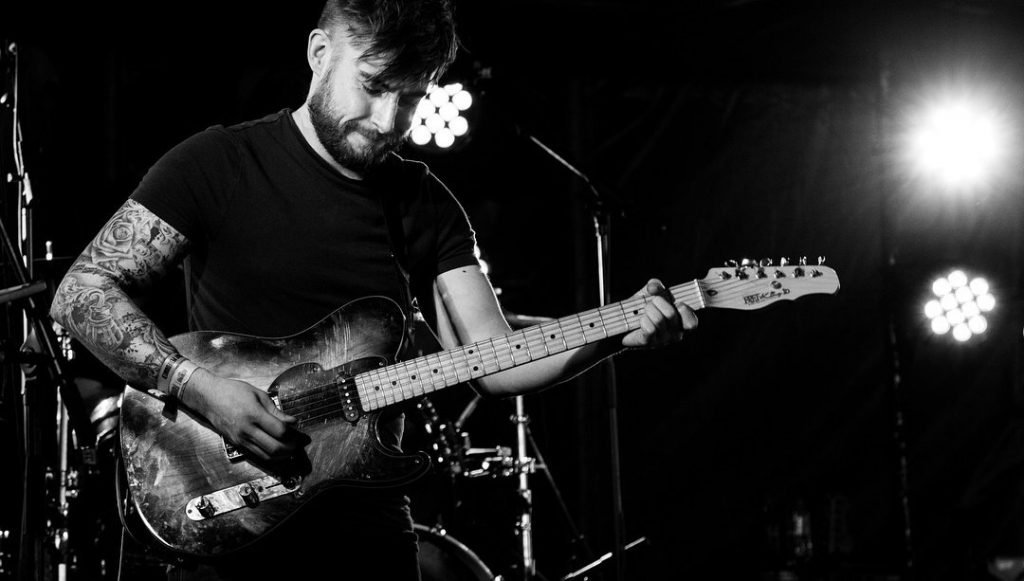top 10 guitar pedals
Here are ten popular guitar pedals that many guitarists use:
- Overdrive pedal – adds a warm, distorted sound to your guitar’s tone
- Delay pedal – creates a repeating echo effect
- Reverb pedal – adds a sense of space and depth to your sound
- Distortion pedal – produces a heavy, distorted sound
- Fuzz pedal – creates a thick, saturated, and sometimes “fuzzy” sound
- Chorus pedal – adds movement and depth to your sound by creating a detuned, doubling effect
- Flanger pedal – creates a sweeping, jet-like sound by combining the original signal with a delayed, slightly pitch-shifted version of the same signal
- Wah pedal – changes the tonal character of your sound by sweeping through different frequency ranges
- EQ pedal – allows you to adjust the balance of bass, mids, and treble in your sound
- Compressor pedal – smooths out the dynamic range of your playing by limiting the volume of the loudest parts and boosting the volume of the quietest parts.
These pedals can be used individually or in combination to shape and customize your guitar’s sound. It’s important to experiment and find the pedals that work best for your style of playing and the music you want to create.

Top 3 textural guitarists
Textural guitar playing refers to the use of techniques and effects that add texture, depth, and complexity to the sound of the guitar. Here are three guitarists who are known for their textural approach to playing:
- Robert Fripp – best known as the guitarist for the band King Crimson, Fripp is known for his use of looping and layering techniques, as well as his use of soundscapes and ambient effects.
- Adrian Belew – another member of King Crimson, Belew is known for his experimental approach to guitar playing, incorporating unconventional techniques such as tapping, slapping, and playing with non-traditional guitar effects.
- David Torn – a multi-instrumentalist and experimental musician, Torn is known for his use of looping and layering techniques, as well as his use of alternate and prepared guitar techniques to create unique and textural sounds.
These three guitarists are just a few examples of musicians who have incorporated textural elements into their playing. There are many other guitarists who are known for their textural approaches, and the techniques and effects used can vary greatly depending on the musician and the music they are creating.
Andy Summers guitar sound
Andy Summers is best known as the guitarist for the band The Police, and his guitar sound played a key role in the band’s unique and recognizable sound.
Summers often used a Fender Stratocaster electric guitar and a Fender Twin Reverb amplifier to get his signature sound. He was known for his ability to create rich, textural soundscapes using a variety of techniques and effects, including fingerpicking, tapping, and the use of a volume pedal. He also made extensive use of echo and reverb effects to create a sense of space and depth in his playing.
One of the key elements of Summers’ guitar sound was his use of alternate and open tunings, which allowed him to create complex chord voicings and melodies that would not be possible in standard tuning. He also used a variety of picking and strumming techniques, ranging from soft and subtle to fast and percussive, to create a wide range of dynamic and timbral variation in his playing.
In addition to his work with The Police, Summers has also released several solo albums and has collaborated with a wide range of artists, including Robert Fripp, Paul McCarney, and John Etheridge. His unique and innovative approach to guitar playing has made him a highly respected and influential musician within the music industry.
The Edge guitar sound
The Edge, whose real name is David Howell Evans, is the guitarist for the Irish rock band U2. He is known for his distinctive and innovative guitar sound, which has played a key role in shaping the sound of U2’s music.
One of the key elements of The Edge’s guitar sound is his use of delay effects. He is known for his use of the Electro-Harmonix Memory Man delay pedal, which he often sets to produce long, sustained delays that build and evolve over time. He also uses a variety of other delay pedals and rack-mounted units to achieve different sounds and textures.
In addition to delay, The Edge also makes extensive use of reverb and other effects to create a sense of space and depth in his playing. He is known for his use of the Roland RE-201 Space Echo and the Eventide H3000 Ultra-Harmonizer, both of which are well-known for their ability to produce rich and complex effects.
The Edge is also known for his use of unconventional guitar sounds and techniques. He often plays with the volume and tone controls on his guitar, using the controls to create a wide range of dynamic and timbral variations in his playing. He has also been known to use alternate and open tunings, as well as a variety of picking and strumming techniques, to create unique and expressive sounds.
The Edge’s guitar sound is characterized by its use of delay, reverb, and other effects, as well as its innovative and unconventional approach to playing. These elements have helped to make him one of the most distinctive and influential guitarists of his generation.
